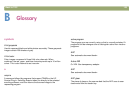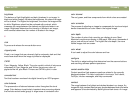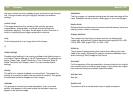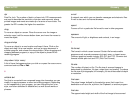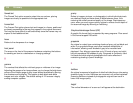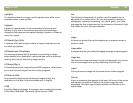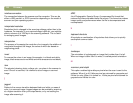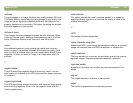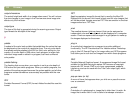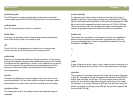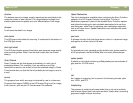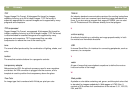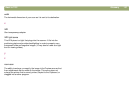
Back to TOC Glossary 131
midtones
The gray shades of an image. Midtones are usually between 30% and
70% black. Midtone control adjusts the brightness of gray levels in the
image so that the lightest and darkest portions of the image can be
properly displayed on your monitor. The higher the setting, the brighter
the image appears on your monitor.
millions of colors
Color images that are composed of three 8-bit color channels. When
combined, the red, green, and blue channels provide up to 16 million
colors. Sometimes referred to as “true color” and “24-bit color.”
moiré
An undesirable pattern in color printing that results from incorrect
screen angles of overprinting halftones. Moiré patterns usually result
when you scan a halftone, when you scan images taken directly from a
magazine, or when you scale an image in an image editor after it is
scanned.
n
negative holder
This XPA piece holds negative strips for scanning. Insert it into the
slide holder on the bottom of the XPA light source for proper scanning
of negatives.
negative light shield
This XPA piece blocks excess illumination and improves image quality
when scanning negatives. Slide it into the negative holder after the
chosen negative strip.
noise reduction
This option reduces the noise (unwanted specks) in an image by
applying software algorithms to minimize the effects of noise in the
scanner electronics.
o
OCR
See optical character recognition.
optical character recognition
Abbreviated OCR. A technology that recognizes letters in a scanned
image and converts them into ASCII characters, or editable text.
optical resolution
The true resolution of a scanner, the resolution at which the scanner
captures images. See also interpolated resolution, resolution.
optimized palette
A palette or color table that contains the pixel colors present in an
image.
original
The original document or picture to be scanned.
output
The file that is generated by the scanning process.



